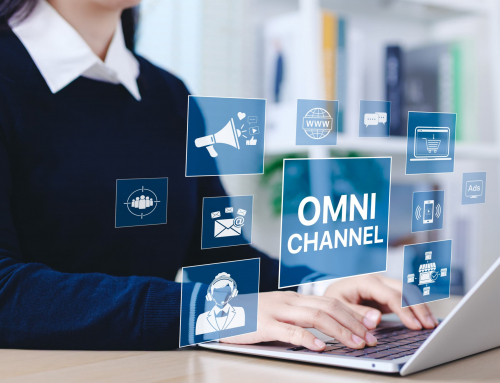3 Key Differences Between Lead Generation and Appointment Setting
Table of Contents
- What Is Appointment Setting?
- Becoming an Appointment Setter
- Why Is Appointment Setting Important?
- Appointment Setter Responsibilities
- The Appointment Setting Process: A Birdseye View
- What Is Lead Generation?
- An Overview of The Lead Generation Process
- The Variances Between Lead Generation and Appointment Setting
- Differences Between Marketing and Prospecting
- Factors to Consider When Hiring an Appointment Setter
- Deciding What’s Right for Your Business
Introduction
This guide covers the skills required for success, the basics of appointment setting, and how it can boost your sales process. We’ll also explore the differences between appointment setting and lead generation. These will help you understand how each strategy interacts and how integrating each can positively impact your business.
Time to read: 10 minutes
Key Takeaways
- Appointment Setting Importance: Increasing revenue, improving brand recognition, and saving money by outsourcing.
- Key Appointment Setter Skills: Strong communication, flexibility, active listening, goal-oriented, and open to continual learning.
- Appointment Setting Process: Identify targets, build a prospect list, make initial contact, qualify leads, set and confirm appointments, prepare for meetings, follow up, and analyze results.
- Responsibilities of Appointment Setters: Ensuring data integrity, qualifying prospects, gathering information, building relationships, managing rejections, setting reminders, and delivering introductory pitches.
What Is Appointment Setting?
Appointment setting is a strategy for bringing in new prospects by setting a date on the calendar for your sales team to discuss your product and potentially make a sale. An outsourced company can do all of this, so all your sales team must do is look at their calendar and show up for the appointment.
Becoming an Appointment Setter
These individuals are essential to the sales process and usually possess excellent conversational and people skills. A high school diploma and experience with customers are generally required. If you’re looking for an appointment setter, ensure the company or person you hire is well-qualified.
Why Is Appointment Setting Important?
Outsourcing appointment settings for your team provides various benefits, such as freeing time to focus on more pressing tasks, driving revenue, and increasing warm leads. Increasing the number of appointments you have scheduled can also drive positive attention to your business and improve brand recognition. Instead of managing the hassle and time of hiring and training a new in-house sales team member, outsourcing your appointment setting can save your business time and money.
What Is B2B Appointment Setting?
In the last step of the lead generation process, an appointment setter will find the best time for an interested prospect to meet with a closing sales representative. During the meeting, the sales rep will provide an in-depth sales pitch to finalize the deal.
Top Focus Areas for B2B Appointment Setting Success
Appointment setters play a crucial role in the lead generation process, so they must hone the right skills to succeed. Here are some key areas to focus on for B2B appointment-setting success:
- Identify and set appointments with key decision-makers.
- Keep your script flexible.
- Ask relevant questions.
- Practice active listening techniques.
- Consistently demonstrate how your service or product provides valuable solutions to the prospect’s problems.
- Stay focused on your goals.
- Remain open to feedback and keep learning.
Working with an outsourcing partner to handle specific steps in the sales and lead generation processes can benefit businesses wanting to supercharge growth and revenue.
Appointment Setter Responsibilities
Appointment setters have virtually as many responsibilities as there are industries that require appointments. Nevertheless, some general overlaps exist in the overarching duties of an appointment setter. While the more common of these are listed below, a good team will always be customized to the needs of your industry and your company’s mission.
- Ensure Data Integrity: Appointment setters update the database with notes on any contact with leads and prospects and verify their information.
- Qualify Prospects: New prospects should be evaluated against the Ideal Client Profile (ICP) and assessed for future development.
- Gather Information: Collect detailed information, such as noting impressions and additional relevant details about prospects to aid closers.
- Build Relationships: Communicate regularly and earnestly with qualified leads to show the organization’s commitment to their needs.
- Manage Rejections and Objections: Use rejections as opportunities to build relationships and maintain interest in future opportunities.
- Set Reminders and Follow-ups: Schedule appointments strategically to keep prospects engaged and allow sufficient preparation time.
- Give Abbreviated Sales Pitches: Setters should be familiar with the company’s offerings and confident enough to discuss them confidently without giving full sales pitches.
In short, appointment setters manage leads efficiently, ensuring data integrity and building relationships. This process matches sales representatives with qualified decision-makers, priming leads for the next step in the sales process.

The Appointment Setting Process: A Birdseye View
A good appointment-setting process will be customized to the industry and the specific company. Below, we outline a typical appointment-setting process for a B2B organization and some of the best practices we have found.
Step 1. Identify Target Businesses
Working with your marketing team, identify your ICP and design a multifaceted campaign to attract their attention, using corporate self-reflection and market research to define your target companies and decision-makers.
Step 2. Build Your Prospect List
Build your prospect list with organizations and individuals interested in your offerings, focusing on “warm” leads obtained through your multi-faceted marketing strategy.
Step 3. Initial Contact
“You never get a second chance to make a first impression,” as Will Rogers said. Craft your initial message and contact experience carefully, choosing the right tone – sales, consultative, conversational, formal, or informal.
Step 4. Lead Qualification
Effective lead qualification should feel like a natural conversation, putting prospects at ease. Appointment setters must know the ICP and understand the available flexibility for each potential lead.
Step 5. Appointment Pitch
Once the lead is qualified, set the appointment by naturally extending the conversation and asking, “When would be a good time to discuss what our company can do for you in greater detail?”
Step 6. Appointment Confirmation
Upon agreement for the appointment, the setter should use the preferred teleconferencing platform to confirm the prospect and the closer (i.e., the sales rep) before ending the call. Confirming while in the conversation will ensure the meeting invitation is scheduled, received, and not likely to be forgotten.
Step 7. Meeting Preparation
Appointment setters should email the closer a written debrief within a few minutes of scheduling the appointment. A follow-up meeting should also discuss additional questions and share information and impressions.
Step 8. Follow Up
Good appointment-setting teams will follow up with reminders about the coming meeting to help keep things in the prospect’s mind. Excellent appointment-setting teams will also avoid flooding the prospect with emails.
Step 9. Measurement and Analysis
Two of the most common metrics used with appointment setters are conversions (i.e., scheduling appointments) and show rate (i.e., the number of people who showed up to the scheduled appointments). Only by measuring and analyzing such metrics can an organization honestly tell whether its approach is working and whether adjustments are needed.
Step 10. Feedback Loop
Results-focused groups, such as good appointment-setting teams, need a feedback loop. This loop allows an organization to discuss the team’s performance, generate aggressive plans based on facts, and align people, strategies, and processes to be successful.
ROI CX Solutions has achieved dramatic results for our partners by following this appointment-setting process. Below, you can see how we transformed the experience for one of our health industry partners by using this same process:
- Increasing speed to answer by 99.7% (from 40 minutes to 7 seconds)
- Reducing the “no-show” rate by 75%
- Generating an additional $1,000,000 a month in revenue
- Improving ease of scheduling rate by 16.58%
What Is Lead Generation?
Before discussing the differences between lead generation and appointment setting, it’s essential to understand the difference between a prospect and a lead.
- Lead: Provides contact information voluntarily; a potential business opportunity.
- Prospect: Has engaged in two-way communication with a salesperson or appointment setter and shown an interest in offerings.
- Sales Funnel Position: Prospects are further along in the sales funnel than leads.
Recognizing these distinctions allows you to tailor your approach, ensuring more efficient and targeted sales efforts. Prospects require more personalized engagement, while leads need initial outreach to move them further along the sales funnel.
An Overview of The Lead Generation Process
Now that we know the difference between lead generation and appointment setting, we can begin looking at the lead generation process. As with the appointment-setting process, the information below lays out the best lead-generation practices and suggestions for a B2B organization. Whether using paid, organic, or AI-generated leads, the following guidelines can be implemented.
Step 1. Identify Target Audience
Understanding your audience is crucial for effective communication and persuasion. Consider factors like position, background, industry, salary, and pain points to distinguish between your target audience and your ICP. Creating a memorable persona for your target audience will help you remember this.
Step 2. Creating Relevant Content
Now that you know your target audience, you can create relevant content for them. As you make that content, keep the target audience we discussed earlier firmly in mind. Pretend you are talking to them, helping them, and addressing their concerns. Ideally, you will do this in close partnership with your marketing team to ensure everything is “on brand” for you.
Step 3. Promotion and Distribution
Utilize a comprehensive marketing strategy with a multichannel approach, such as integrating social media, website interaction, and targeted connections to effectively promote your organization, services, or goods beyond just posting content on your website.
Step 4. Lead Capture
Implementing website engagement tools and AI technology allows you to capture leads inexpensively. Engaging potential leads through chat functions to assess lead suitability also allows appointment setters an earlier step in the lead management process.
Step 5. Lead Nurturing, Scoring, and Qualification
Appointment setters are vital in lead generation. They gather detailed information, score it, and determine qualifications based on that information. Ensuring that only qualified leads proceed to the sales channel maximizes the efficiency and effectiveness of the lead generation journey.
Step 6. Handoff to Sales
The lead is formally handed off to the appropriate sales channel in this step. As outlined above, the appointment setter should fully debrief the sales channel for the upcoming sales meeting.
Step 7. Conversion and Sales Meeting
During the conversion and sales meeting phase, your sales representative guides the prospective lead from the appointment setter’s handoff to the final contract signing. Remember, each interaction influences future relationships, highlighting the enduring importance of positive word-of-mouth in today’s business landscape.
Step 8. Measurement and Analysis
As with the appointment-setting process, benchmarks and metrics determine whether the current process is successful. Some standard metrics utilized in the lead generation process include:
- Number of leads generated
- Conversion rate
- Sales cycle length
- Lead response time
- Lead quality
Tracking these KPIs and analyzing the trends are prominent in the feedback loop stage.
Step 9. Feedback Loop
The feedback loop should integrate the following:
- Metrics
- Anecdotal evidence
- Impressions
Discussing this information allows the loop to play a pivotal role in ongoing success by facilitating constant refinement and adaptation to meet evolving business needs and market trends.
Here at ROI CX Solutions, we use an abbreviated version of this lead generation process. Our version focuses on saving our partners time, boosting their sales revenue, increasing audience awareness, and reducing costs where possible so you can get the biggest bang for your buck.

The Variances Between Lead Generation and Appointment Setting
Lead generation and appointment setting have many similarities, but they have a few key differences you’ll want to consider before deciding which one is right for your business. The two marketing methods differ in the following ways.
Goal
- Appointment Setting: Get business in front of new clients for partnerships or sales.
- Lead Generation: Find potential clients interested in product/service without booking appointments.
Strategy
- Appointment Setting: Involves scheduling specific dates for contact with prospects.
- Lead Generation: Focuses on finding potential clients and passing their information to the business for further action.
Process
- Appointment Setting: Schedule appointments for direct contact with prospects.
- Lead Generation: Provides information about potential clients without setting specific appointments.
Influence
- Appointment Setting: Fosters more robust prospects over time, offering a long-term solution.
- Lead Generation: Expands pipeline, facilitates quick deals, and engages new customers.
While appointment setting aims to schedule meetings for new partnerships or sales, lead generation identifies potential clients without booking appointments. Each offers distinct advantages in client acquisition and nurturing.
Differences Between Marketing and Prospecting
With all this talk of bringing in leads and prospects, you may wonder: What is the difference between marketing and prospecting? There are many similarities, but prospecting is usually about nurturing individual relationships, while marketing is about sending a mass message to a target audience.
Factors to Consider When Hiring an Appointment Setter
As we have shown, an appointment setter can have a massive impact on the sales funnel. Here are just a few factors to consider before hiring someone that we at ROI CX Solutions have found to be the most important.
Your Needs
- Do you have the capacity to scale internally, or will your company seek an outsourcing partner?
- Define the type of appointment setter needed: inbound calls and appointment scheduling or involvement in sales funnel steps.
Personality Traits
- Ensuring team fit and avoiding unnecessary drama.
- Understanding human interactions and compatible personalities in different roles.
Experience
- Consider the candidate’s overall experience, including industry-specific knowledge and adaptability to role dynamics.
- Assess the technological proficiency required for the role.
Industry
- Industry-specific differences influence the appointment setter requirements.
- Skills may overlap but emphasize the importance of sales background within specific industries.
Deciding What’s Right for Your Business
While appointment setting and lead generation share similarities, they diverge significantly in goal, strategy, process, and influence. Understanding these distinctions is crucial for businesses to make informed decisions about their client acquisition strategies, ensuring alignment with their unique objectives and preferences.
Now that you know the differences between lead generation and appointment setting, which is right for you? Only you can decide the answer to that question, so think about your goals and do thorough research before you choose the best fit for your needs.






